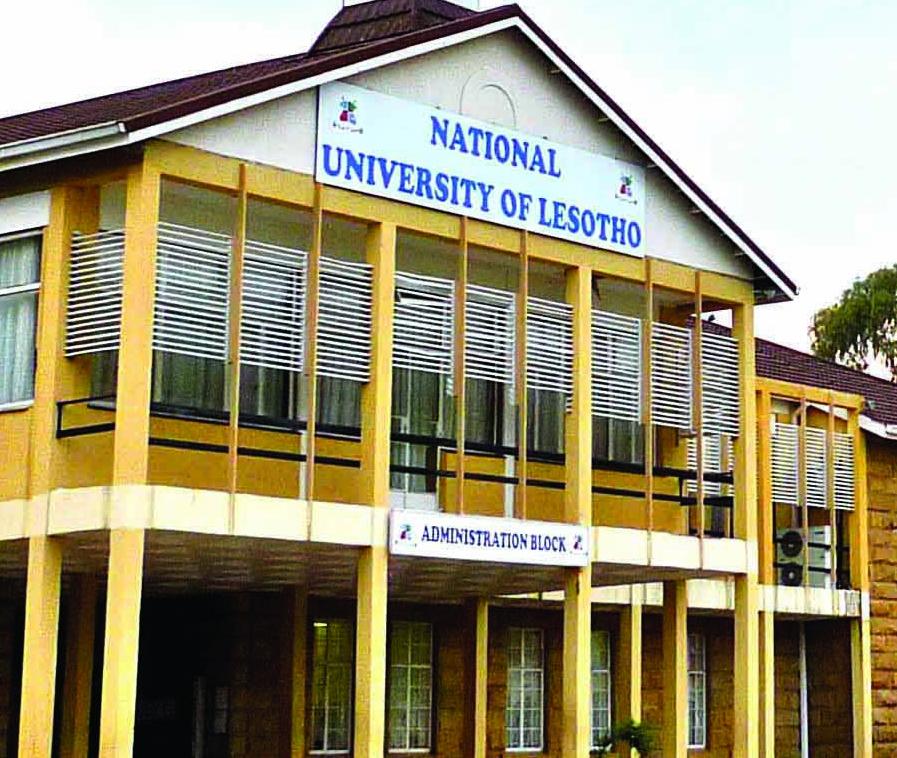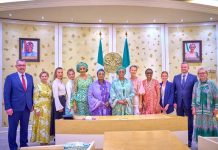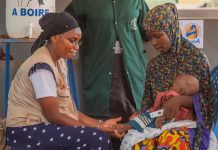Africa-Press – Lesotho. The Covid-19 pandemic has exposed Lesotho’s higher education’s inability to cope with the demands of the 21st century. Your article, ‘NUL Senate backs Mosito’ that describes a conflict between the university’s management against students over online teaching and learning epitomises this challenge.
On the other hand, many remember the 2015 and 2016 demands for decolonised higher education by South African students. More recently a friend expressed reservations about the decolonisation of higher education curriculum saying he has “never heard exactly how it was colonised”.
He lamented that ‘a university student describing it left me wondering whether these popular slogans have contributed to stupidity demonstrated by this student.
’ The Centre on Higher Education (CHE) highlights that Lesotho’s government must invest more in higher education. But the uptake of these students into the world of work is a concern.
For example, there were 4 139, 2 836, and 3 351 unemployed graduates for 2015/16, 2016/17 and 2017/18 respectively. Many of these graduates have never worked beyond graduation.
The figures must have risen drastically due to the Covid-19 pandemic shutdown. Educational crises stir up every curriculum reconstruction. The Covid-19 pandemic, the national shutdown with its aftermath, presents Lesotho’s education system with an opportune moment to reposition for the 21st century.
I will argue that the African child must be at the centre of such a curriculum. In the context of Lesotho, an African university is one that affirms a Mosotho child, their culture and being.
Lesotho inherited an education system whose primary aim was to develop the Christian character. The system instilled the Christian ethos with little attention to subjects like mathematics and the sciences.
This practice filtered into higher education, where the Catholics established Pius XII College in 1945. Pius provided African Catholic students with post-matriculation and religious guidance.
A plethora of denominational teachers’ and nurses’ training colleges mushroomed alongside the church denominations. Moreover, the government built Lerotholi Artisan Training College (now Lerotholi Polytechnic) and the Lesotho Agricultural College (LAC).
The education system produced teachers, ministers, nurses, police officers, artisans, and agricultural field supervisors. The education system served the convenience of colonial civil servants who were stationed in Basutoland.
Lesotho governments subsequently built several HEIs. In 1975, the government combined all the denominational teacher training colleges to form the Lesotho National Teachers’ Training College.
This later became the Lesotho College of Education (LCE). The year 1979, saw the birth of the Centre for Accounting Studies, (CAS). The government established the Lesotho National Health Training College (NHTC) in 1989.
With the colonisation, the focus shifted. Scholars like Mokopakgosi and government reports agree that education in Lesotho is an adaptation and modification of the English education system. The colonial government redirected the Lesotho education system to capacitate the public sector in the areas deemed scarce.
For example, the University of Botswana, Lesotho and Swaziland (UBLS), an offspring of Pius XII College, offered qualifications in public administration, economics, law, education, theology and general humanities. The National University of Lesotho (NUL) emerged in 1975 after UBLS disintegrated.
The NUL inherited Faculties of Sciences, Social Science, Education, and Humanities, and kept them until they added the Faculty of Law, and subsequently, Faculties of Agriculture (established, 1991) and Health Sciences.
The demise of the UBLS is symptomatic to the broader failure of the higher education system in Lesotho. The UBLS failed because of the strong insular nationalism of the member states and the absence of regionalism.
At a local level, an appropriate term is ‘nationhood’. Nationhood must drive our higher education system. Here, nationhood means the degree to which we empower ourselves, thus, escape being disempowered by others.
Lesotho has a total of 15 HEIs, three universities and 12 colleges. The total higher education enrolment was 23 223 (females 61% and males 39%) in 2017/18.
Yet, there were 353 masters and 11 doctoral students. In 2017/18, there were 9 477, 2 456 and 9 289 students enrolled for diplomas, advanced diploma and undergraduate degrees.
Most students enrol for undergraduate qualifications. The CHE worries that these do not address Lesotho’s developmental needs. It is essential to find out where the females (61%) are in their respective HEIs.
HEIs must guide women into priority programmes that empower them to play active roles in Lesotho’s development agenda. Lesotho cannot be what it is ought to be unless a woman is what she ought to be.
The World Bank, says our public healthcare system is ailing and crisis-plagued. The current pandemic overly highlights this predicament. Quality healthcare is scarce and inaccessible to the general public.
Moreover, CHE seeks to align higher education programmes with national priorities. But then, in 2016, Lesotho lost the opportunity to address its public healthcare challenges when the government elected to shut down the Lesotho School of Medicine (LSoM).
The government blamed their decision on CHE’s audit recommendation. The government chose a more comfortable option when they knew well that CHE’s recommendations were developmental and not punitive.
LSoM conception, its feasibility study and implementation saw different Vice-Chancellors (VC) and governments. Each had other interests at different times.
For example, the VC at the time of shutdown was indifferent about LSoM in his restructuring agenda of NUL. After the shutdown, the prime minister turned this debacle into politics.
He promised to build a medical school that his government had just dismantled. This decision was myopic because it denied Basotho world-class healthcare.
To run effectively, the school required top-notch physical and human facilities. These benefits would trickle down to all Basotho. Moreover, doctors prefer to work in the context in which they were trained.
Therefore, it makes sense that we train Basotho doctors in Lesotho. The doctors would be trained on Basotho, using available equipment. When the equipment is unavailable, the government must buy it.
CHE publishes HEIs’ academics’ qualifications. We must view academics’ credentials in the context of curriculum implementation and research output. Research output, postgraduate studies at masters and doctoral levels, relate to academics with PhDs.
Out of a total of 494 teaching staff at NUL, 124 had PhDs. Limkokwing University of Creative Technology (LUCT) had no academics with PhDs while Botho University (BU) had one.
The curriculum of HEIs in the Third World mirrors those in western countries. The curriculum is often static and resistant to change. Mashinini says the curriculum reconstruction process at NUL was slow, with departments making cosmetic changes while mainly offering the old curriculum.
Enrolment statistics tell us that the system focuses its resources on undergraduate studies. This practice hinders Lesotho from addressing her developmental needs because undergraduate studies take up most resources that institutions would use to engage in postgraduate studies.
CHE reports that research output is low in Lesotho. HEIs must correct this anomaly. CHE is concerned about the low NUL research output. But other universities did not produce any research.
Despite CHE’s recommendation that LUCT and BU take up research, these are private universities, whose priorities focus on their balance sheet. Elsewhere, I have shown that the church took away the power of Basotho to determine their cultural values and traditions.
In short, the educational system needs to transform. According to Mills, transformation entails dismantling a colonial system which keeps re-writing itself by conditioning what we can think, do and believe, well after the demise of colonisation.
In other words, for Lesotho to fully transform, Basotho must disentangle themselves entirely from the bondage of colonialism. Scholars such as Wilson and Prah argue that using a colonial language compromises an African student.
Prah asserts that African education systems, such as in Lesotho, must turn to their vernacular if they wish to develop their countries by making education relevant.
‘Lift the language’, he contends, ‘you lift the people’.
If Lesotho puts her indigenous language, Sesotho, at the forefront, the country’s concerns will be at the centre of the national educational curriculum.
Knowledge and innovation would answer the Basotho needs and aspirations. For HEIs to blossom, all teaching academics must engage in power relations at play during curriculum development.
The curriculum, the Language of Teaching, Learning and Assessment (LoTLA), textbooks and other references, represent the dominant group, the English, our former colonial masters.
Instead, our curriculum must reflect Basotho. As Wilson suggests, an African curriculum puts an African child at the centre. Put differently, Basotho must be at the centre of a Lesotho HE curriculum.
This curriculum must affirm Basotho, their being and values. In so doing this curriculum will empower Lesotho. The economy of a country is as good as its people.
Therefore, Basotho must actively drive their knowledge agenda. Culture, Basotho tradition and values of people are not static. They evolve as the context and environments that people live in change.
But societies will always have a culture and a set of values they live by. History teaches us that Basotho cultural practices such as ‘lebollo’ and many others were critical to Lesotho’s nation-building.
HEIs must incorporate this knowledge into their curriculum. So, HEIs must conduct multi-disciplinary research to explore ways of putting Basotho culture and traditional values at the centre of their curriculum.
Such multi-disciplinary and institutional research must involve the Centre for Teaching and Learning, Moshoeshoe I Institute of Leadership, the Faculties of Education and Social Sciences at NUL and teaching departments.
Sociologist Bernstein developed the ‘pedagogic device’ to explain how power dynamics in education serve the dominant groups’ interests. The pedagogic device provides a framework for translating knowledge into pedagogy, in doing so helps organise knowledge into teaching.
Bernstein identified three main fields for the pedagogic device: Fields of Production, Recontextualisation, and Reproduction. The Field of Production is concerned with research and knowledge creation.
Production of knowledge takes place in research institutes and universities. The next field, the Field of Recontextualisation, deals with selecting and ordering knowledge into the curriculum.
At higher education, the recontextualisation of knowledge must occur at teaching departments. Lastly, the Field of Reproduction is about pedagogising knowledge.
Pedagogy takes place at schools and HEIs classrooms. The fields are hierarchically related, and they inform each other. Recontextualisation of knowledge can only take after production of original knowledge.
The two other fields sandwich the Field of Recontextualisation, in the hierarchy. At the same time, reproduction of knowledge cannot take place without recontextualisation of knowledge.
Institutionalised religions like Christianity successfully ‘pedagogised’ knowledge, and used the Bible to conquer nations. Constantine instructed the clerics to translate the Old and New Testaments into Latin.
They deliberately re-organised the books of the Bible to suit the Emperor’s purpose. The church enculturated the conquered nations with their doctrine.
For example, the missionaries urged Moshoeshoe to ban Basotho culture to promote Christianity. HEIs must undertake the processes of knowledge production and reproduction.
All academics must become active actors in the different fields of Bernstein’s pedagogic device. They must drive the academic agenda of HEIs and privilege Basotho culture, values, and Lesotho’s needs.
HEIs predominantly registered students in diploma qualifications. Further, diploma qualifications are the highest qualifications in colleges. They must convert a majority of these diploma qualifications into degrees.
Degrees provide a foundation for postgraduate studies, which in turn lead to doctoral studies. Postgraduate studies both at masters and doctoral qualification help to launch research at HEIs.
These qualifications are critical in building a critical mass of research and knowledge production. There is a critical need to improve research capacity in public HEIs: NUL, LCE, LP, LAC and CAS.
I do not suggest that we must exclude private HEIs from these endeavours. But they are run purely as a business entity to survive. Quality research feeds directly into quality knowledge production, curriculum and pedagogy.
Hence, the government must attach research output in the funding formula for these institutions, especially universities, while at the same time motivating emerging researchers in colleges.
In conclusion, this article argues that the shutdown of LSoM was erroneous. The government could have avoided such a move. The scientific study identified a need, but different actors failed because of the lack of political and institutional will.
The present pandemic, with mutant variants emerging, shows that this was an opportunity missed. Notwithstanding the current studies of the NUL’s Innovation Hub, Lesotho would research a pandemic remedy in her context.
I showed that creating research capacity in institutions facilitates academics to develop into active actors at all power levels in Bernstein’s pedagogic device arena.
This empowerment endeavours would empower Basotho academics to determine the curriculum and pedagogics in our HEIs. If Lesotho can determine its knowledge, then Basotho would have the power to decide their future.
Scholars suggest that African institutions revert to African languages such as Sesotho as LoTLA our HEIs. But many view this suggestion as ludicrous. We may use Sesotho to lift Basotho.
The LoTLA is crucial to any curriculum. But this needs a rigorous scientific study. The study would require investment in terms of resources and time. I argue that an African HEI must put Lesotho and a Mosotho student at its centre.
To attain this, the Faculties of Education and Social Sciences, Centre for Teaching and Learning, Moshoeshoe I Institute of Leadership, and academic departments must carry out collaborative research that would enable them to implement a ‘Mosothocentric’ curriculum.
For More News And Analysis About Lesotho Follow Africa-Press






